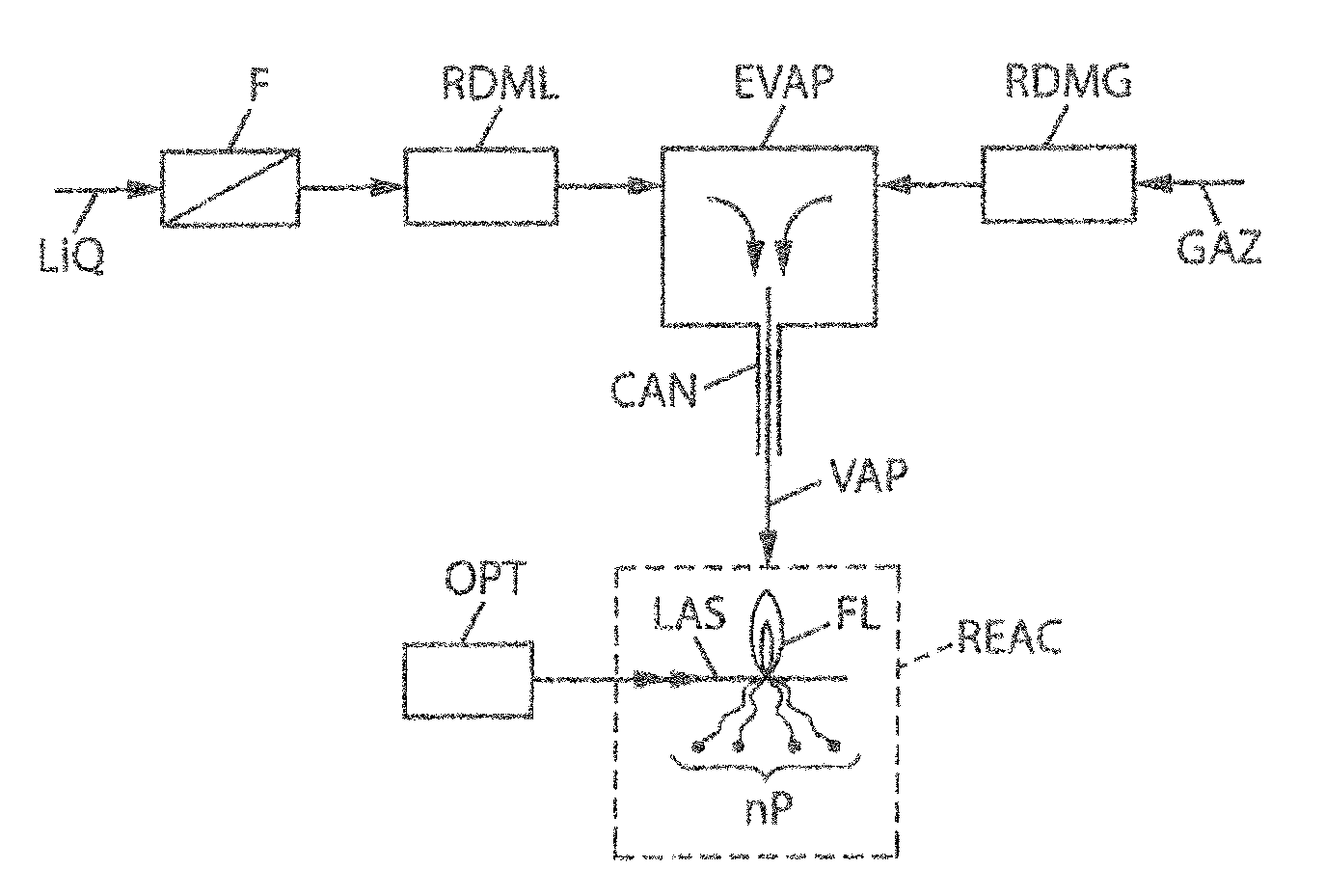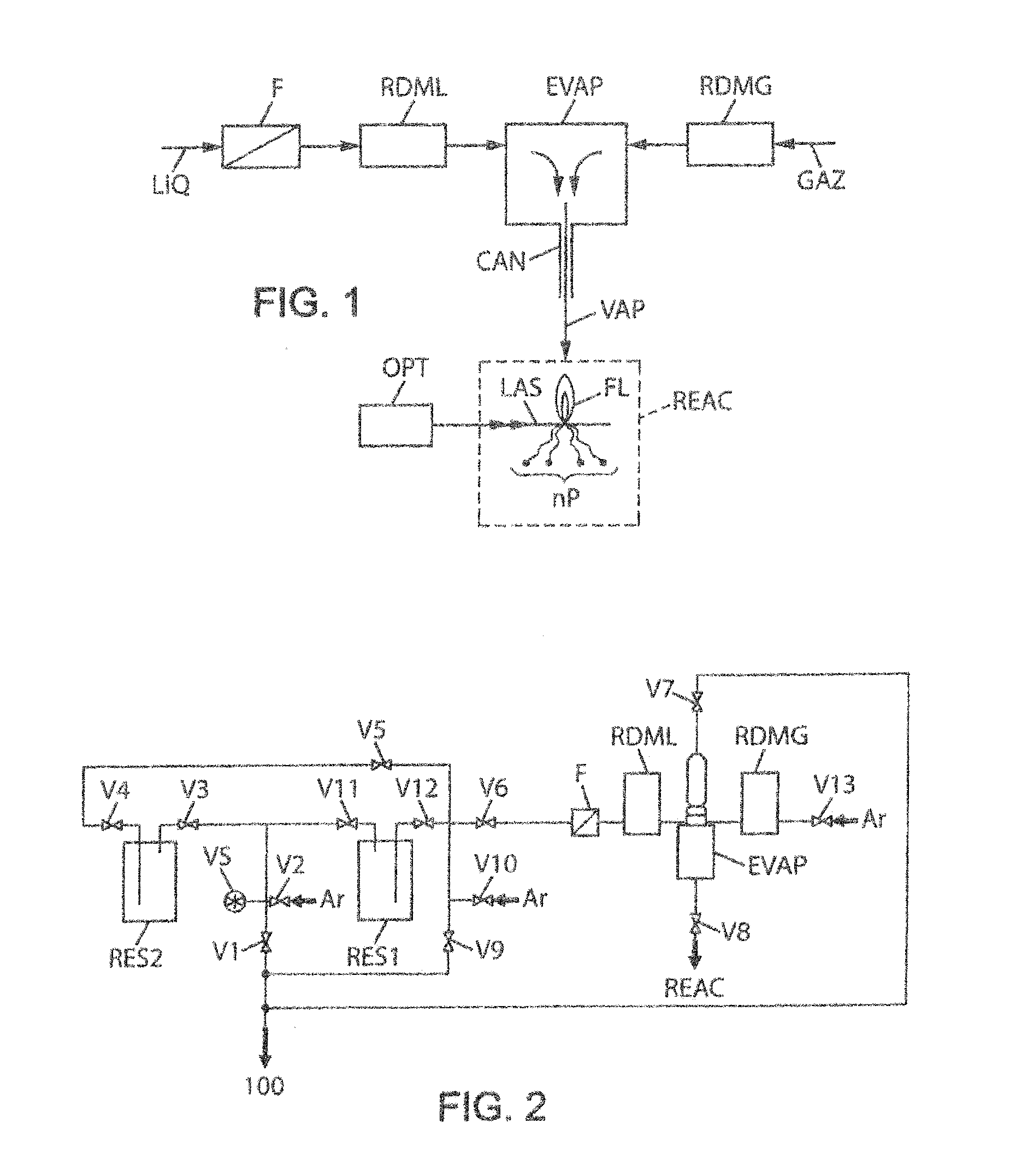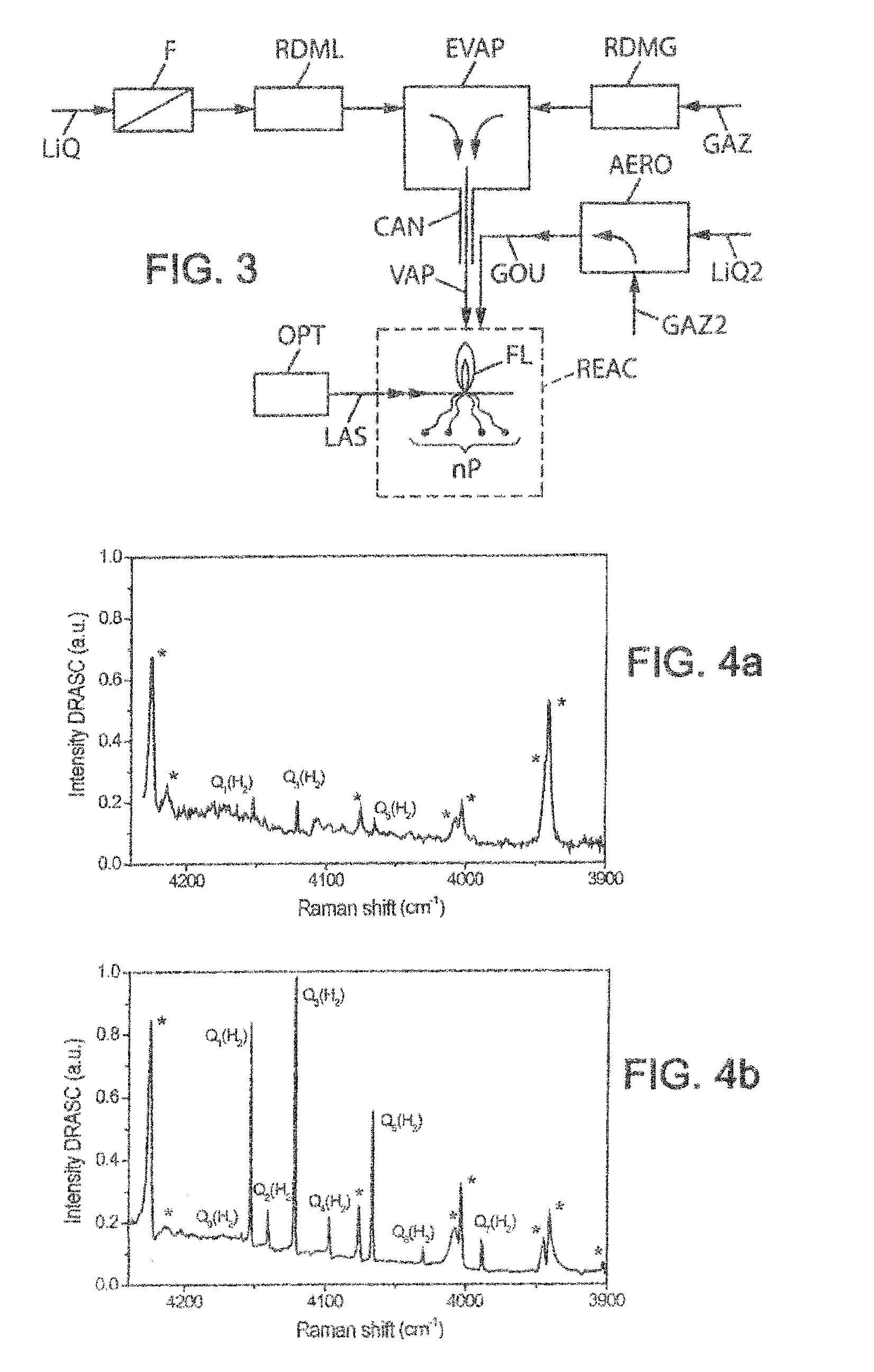Synthesis of Nanoparticles by Laser Pyrolysis
a laser pyrolysis and nanoparticle technology, applied in zirconium oxides, organic chemistry, oxygen/ozone/oxide/hydroxide, etc., can solve the problem of metal oxide powders that can be obtained from metal precursors, main limit of this synthesis technique, and particle size distribution of particles obtained by this type of method is often not uniform
- Summary
- Abstract
- Description
- Claims
- Application Information
AI Technical Summary
Benefits of technology
Problems solved by technology
Method used
Image
Examples
Embodiment Construction
[0065]An exemplary embodiment of the invention is shown in FIG. 1.
[0066]The precursor, first in liquid form LIQ, is filtered by filter F. Its flow rate is then controlled by a mass flow controller RDML, which is followed by an evaporator EVAP, which then converts the precursor to the vapor phase VAP before interaction with the laser beam LAS.
[0067]Thus, it is proposed to couple a laser pyrolysis device with a mass flow controller RDML to control the precursor flow rate in liquid form LIQ, before converting it to the vapor phase VAP for injection into the pyrolysis reactor REAC.
[0068]The vapor VAP is entrained by a gas stream (preferably by an inert gas in the pyrolysis reaction, such as a rare gas, for example argon). This gas stream GAZ is also managed by a gas mass flow controller RDMG. The mixture of vapor and gas (referenced VAP) leaving the evaporator-mixer EVAP is finally conveyed to the laser pyrolysis reactor REAC via a line CAN of which the temperature is set so as to preve...
PUM
| Property | Measurement | Unit |
|---|---|---|
| temperature | aaaaa | aaaaa |
| specific surface area | aaaaa | aaaaa |
| frequency | aaaaa | aaaaa |
Abstract
Description
Claims
Application Information
 Login to View More
Login to View More - R&D
- Intellectual Property
- Life Sciences
- Materials
- Tech Scout
- Unparalleled Data Quality
- Higher Quality Content
- 60% Fewer Hallucinations
Browse by: Latest US Patents, China's latest patents, Technical Efficacy Thesaurus, Application Domain, Technology Topic, Popular Technical Reports.
© 2025 PatSnap. All rights reserved.Legal|Privacy policy|Modern Slavery Act Transparency Statement|Sitemap|About US| Contact US: help@patsnap.com



